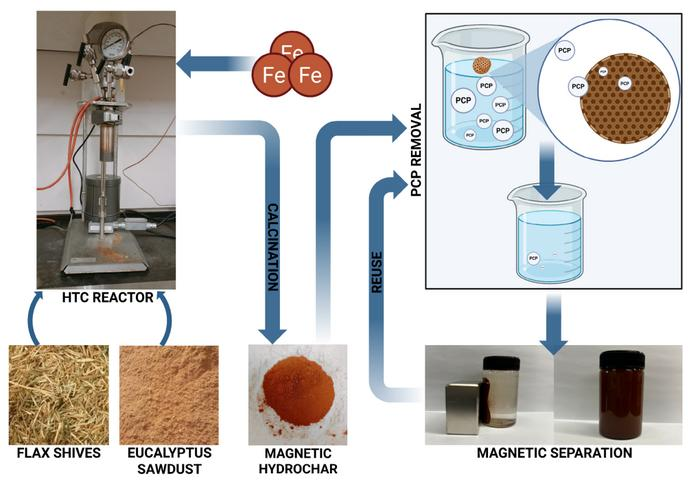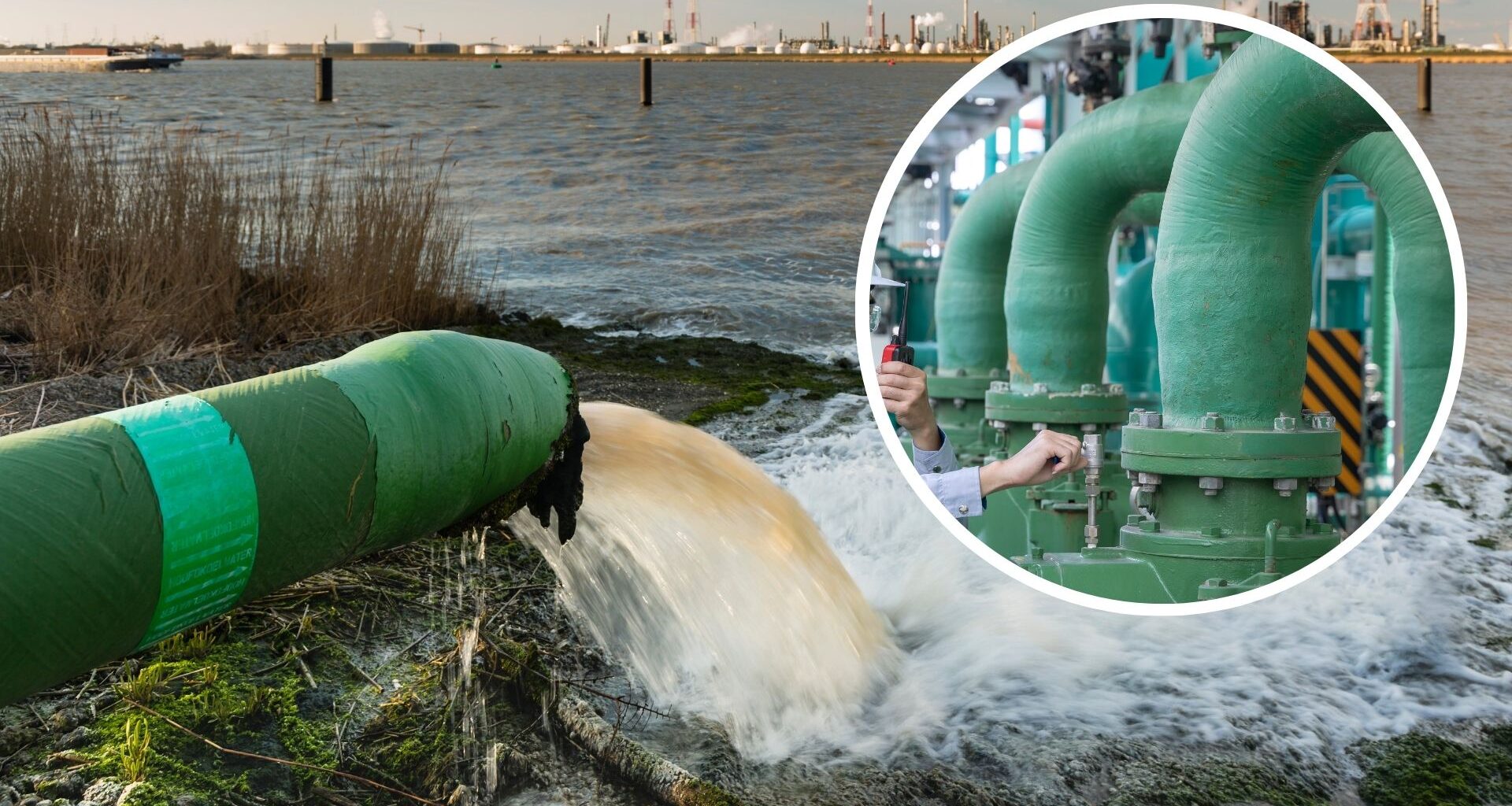Scientists have developed a new method that removes toxic pollutants from wastewater.
Developed by researchers from Dalhousie University, the innovative method offers a new way to reuse wastewater sustainably.
The simple and eco-friendly method to turn agricultural and forestry waste into powerful magnetic materials can effectively remove toxic chemicals from water.
Sustainable, low-cost, and reusable solution
“Our goal was to develop a sustainable, low-cost, and reusable solution for treating wastewater contaminated with harmful chemicals,” said lead author Tunnisha Dasgupta, a researcher at Dalhousie University’s Faculty of Agriculture.
“By using agricultural and forestry residues, we are not only cleaning water but also giving new value to waste materials.”
Researchers demonstrated magnetic carbon adsorbents made from two common waste products: flax shives and eucalyptus sawdust.
Method turns biomass into carbon-rich solids
These materials were converted into “hydrochar” through a process called hydrothermal carbonization, which transforms biomass into carbon-rich solids under heat and pressure. By adding iron during the process, the researchers created magnetic hydrochars that can be easily separated from treated water using a magnet, eliminating the need for costly filtration, according to a press release.
Published in Sustainable Carbon Materials, the study involves converting biomass waste into magnetic carbon-based adsorbents through hydrothermal carbonization (HTC).
The research team revealed that during the HTC process, iron was incorporated to impart magnetic properties to the resulting hydrochar, enabling post-treatment recovery using an external magnet. Hydrochars derived from flax shives (FS-Fe-HC), and eucalyptus (ES-Fe-HC) were tested for their efficiency in adsorbing pentachlorophenol (PCP) from wastewater.
“This study demonstrates the potential of HTC as a sustainable approach for valorizing lignocellulosic waste into effective bio-adsorbents for wastewater remediation, addressing both environmental and industrial challenges,” said researchers.
“The novelty lies in utilizing dual biomass waste, magnetic recovery capability, and high reusability with minimal iron leaching, thereby contributing to circular economy practices in water treatment.”
 Sustainable carbon materials for magnetic adsorbent-based pentachlorophenol removal from wastewater. Credit: Tunnisha Dasgupta, Himadri Rajput, Pubudi Perera, Xiaohong Sun & Quan
Sustainable carbon materials for magnetic adsorbent-based pentachlorophenol removal from wastewater. Credit: Tunnisha Dasgupta, Himadri Rajput, Pubudi Perera, Xiaohong Sun & Quan
Outstanding performance in removing persistent and highly toxic pollutant
The research team also revealed that the new materials demonstrated outstanding performance in removing pentachlorophenol (PCP), a persistent and highly toxic pollutant commonly found in industrial and agricultural wastewater.
Under optimal conditions, the flax-based hydrochar removed up to 95 percent of PCP, while the eucalyptus-based version achieved nearly 89 percent removal. Both materials maintained high efficiency through six reuse cycles, showing excellent stability and minimal loss of performance. Importantly, no iron leakage was detected, confirming that the materials are safe and environmentally friendly, as per the press release.
The innovation represents a step forward for circular economy practices in water treatment.
“This work shows how we can turn organic waste into advanced materials that protect our environment,” said senior author Dr. Quan. “The magnetic hydrochars are scalable, efficient, and align with global goals for sustainable water management.”

